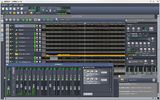 I was in need to mount some image from Nero, and so i discovered an useful small program: CDEmu.
I was in need to mount some image from Nero, and so i discovered an useful small program: CDEmu.
CDEmu is a CD/DVD-ROM device emulator for linux, licensed under GPL v2 or later. It is a from-scratch rewrite of the legacy CDEmu project, which was started by Robert Penz.
And while i was searching for some documentation i found this useful from Gentoo Forum, a bit old, but still good:
Now that CDemu 1.0.0 is in Portage i decided to update my Nautilus mount script. What does it do? You Just right-click on an image, choose Scripts, disk-mount. It will load your image into an available device, your desktop’s automounter does the rest. Easy. CDemu supports all kinds of images, as opposed to mount -o loop, which can only handle iso. Also, you don’t need root rights to mount.

 In the last years a lot of new software is come for
In the last years a lot of new software is come for In a former article I’ve talked about
In a former article I’ve talked about  Everyone in the Gnu/Linux world (or so i think) has been worried by the news about
Everyone in the Gnu/Linux world (or so i think) has been worried by the news about 